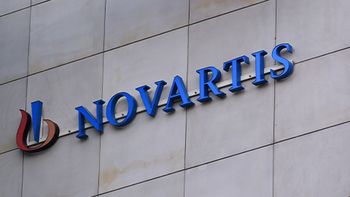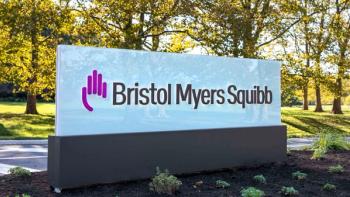Key Takeaways
- FDA Approves Kisunla Label Update: New titration dosing schedule for Kisunla (donanemab-azbt) reduces risk of amyloid-related imaging abnormalities with edema/effusion (ARIA-E) in early symptomatic Alzheimer disease patients.
- TRAILBLAZER-ALZ 6 Results Support Safety: Modified regimen cut ARIA-E risk by 41% at 24 weeks and maintained comparable efficacy in amyloid plaque and P-tau217 reduction.
- No New Safety Signals Identified: No new adverse events reported; most common cause of discontinuation was infusion-related reactions, which were seen at higher rates in modified dosing.
The FDA has approved a label update for Eli Lilly’s Kisunla (donanemab-azbt), introducing a new recommended titration dosing schedule aimed at reducing the incidence of amyloid-related imaging abnormalities with edema/effusion (ARIA-E) in adults with early symptomatic Alzheimer disease (AD), including those with mild cognitive impairment or mild dementia and confirmed amyloid pathology. According to the company, the revised schedule was approved based on data from the Phase IIIb TRAILBLAZER-ALZ 6 trial (NCT05738486).1
How does the Updated Kisunla Dosing Schedule Impact Safety and Efficacy in Alzheimer Care?
"We are confident that this label update for Kisunla will significantly aid healthcare professionals in evaluating appropriate treatment options for their patients," said Brandy Matthews, MD, FAAN, VP, global & US medical affairs, AD, Eli Lilly, in a press release. "This update underscores our unwavering commitment to patient safety and the advancement of Alzheimer's disease treatment by potentially mitigating the risk of ARIA-E."
TRAILBLAZER-ALZ 6 Trial Design and Endpoints
- The multicenter, randomized, double-blind TRAILBLAZER-ALZ 6 trial investigated different dosing regimens of Kisunla and its effect on ARIA-E in 843 patients with early symptomatic AD.
- The primary endpoint of the trial was the proportion of participants with any occurrence of ARIA-E by week 24.1
- Secondary endpoints included the effects on brain amyloid deposition, the proportion of participants with any occurrence of amyloid-related imaging abnormalities with hemosiderin (ARIA-H) deposition, the severity of ARIA-E and ARIA-H, and donanemab serum pharmacokinetics.2
Key Findings on ARIA Risk and Amyloid Clearance
- Results show that patients treated with Kisunla achieved comparable efficacy in amyloid plaque and P-tau217 reduction while lowering the risk of ARIA-E by 41% at 24 weeks and 35% at 52 weeks compared to the original regimen.
- Including asymptomatic imaging findings, ARIA, ARIA-E, and ARIA-H were observed in 29%, 16%, and 25% of patients, respectively, on the modified titration.1
- The modified dosing achieved 67% efficacy in reducing amyloid plaque and P-tau217 compared to 69% in the original dose.
- No new adverse events (AEs) were reported during the trial.1
- Around 5.2% of patients in the modified titration arm reported at least one AE that led to treatment discontinuation.
- The most common AE that led to treatment discontinuation was infusion-related reaction. Higher rates of hypersensitivity reactions and infusion-related reactions were observed.1,2
Alzheimer’s Burden and Broader Context
According to the Alzheimer’s Association, over seven million people in the United States are currently living with AD. By 2050, this figure is projected to rise to 13 million, barring a breakthrough treatment.
Approximately 11% of all people in the United States over 65 years of age are currently living with AD, of whom 74% are aged 75 years or older. Close to two-thirds of people with AD are women, who face a one in five chance of developing the disease after age 45, compared to one in 10 for men.
By the end of 2025, healthcare costs associated with AD are expected to reach $284 billion, with projections rising to $1 trillion by 2050. In 2024, unpaid caregivers accounted for approximately $413 billion worth of care time.3
Kisunla was originally approved in July 2024 following positive results from the TRAILBLAZER-ALZ 2 Phase III trial.1
"This updated dosing strategy is a meaningful advancement for patients and their care teams," said Elly Lee, MD, chief medical officer, principal investigator, Irvine Center for Clinical Research, in the press release. "By significantly reducing the risk of ARIA-E, we can offer patients and care teams greater confidence in the safety of Kisunla while preserving its ability to reduce amyloid."
References
- FDA approves updated label for Lilly's Kisunla (donanemab-azbt) with new dosing in early symptomatic Alzheimer's disease. Lilly. July 9, 2025. Accessed July 10, 2025. https://investor.lilly.com/news-releases/news-release-details/fda-approves-updated-label-lillys-kisunla-donanemab-azbt-new
- Modified titration of donanemab reduces ARIA risk and maintains amyloid reduction. Alzheimer’s Association. Accessed July 10, 2025. https://alz-journals.onlinelibrary.wiley.com/doi/10.1002/alz.70062
- Alzheimer's Disease Facts and Figures. Alzheimer’s Association. Accessed July 10, 2025. https://www.alz.org/alzheimers-dementia/facts-figures?utm_source=google-grant&utm_medium=paidsearch&utm_campaign=google_grant&gad_source=1&gad_campaignid=42054366&gbraid=0AAAAAD14_NhuSAujBauo-lpff7gt2V58k&gclid=CjwKCAjwyb3DBhBlEiwAqZLe5IFoJuZtFdhGm-rwIOKj1MKrzJeAim-SQ6-FlhF2DzM6iqDioliR5RoCTSIQAvD_BwE





